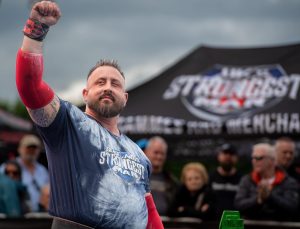Focus on your Rehabilitation
Your first appointment will be no different from the usual physiotherapy consultation and evaluation. You will be asked specific questions related to your particular sport or even to demonstrate some movements. Your diagnosis and treatment plan will be discussed in the usual way.
Treatment is likely to involve the use of physiotherapy techniques within the treatment room combined with a more specific exercise based programme to be completed in a gym environment. The aim is to return to full physical activity.
Sport & Exercise Services
Our specialist sports physio are highly experienced in the assessment and treatment of soft tissue injuries, with in depth knowledge of biomechanics, tissue pathology and healing. They carry out a thorough assessment, treatment and rehabilitation for all musculoskeletal injuries.
For complaints including:
Overuse injuries and stress fractures
Muscle tears, tendon and ligament sprains
Knee, ankle and foot injuries
Shoulder injuries, tennis/golfer elbow, hand and wrist pain
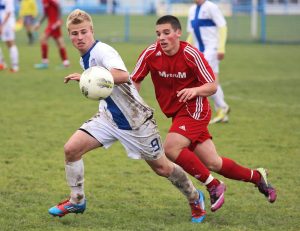
Football Injuries
Football is a dynamic sport that often leads to a variety of injuries, including sprains, strains, fractures, and overuse injuries. Our approach begins with a comprehensive assessment to understand the nature and extent of the injury. For acute injuries like ankle sprains or hamstring strains, we utilize techniques such as manual therapy, taping, and ultrasound therapy to reduce pain and swelling.
Rehabilitation is tailored to the specific needs of the athlete, focusing on restoring strength, flexibility, and function. For knee injuries, particularly ACL tears, a structured rehab program involving progressive resistance exercises, balance training, and sport-specific drills is essential. Education on injury prevention, proper warm-up routines, and post-recovery conditioning are integral to my treatment plan. By providing personalized care and support, our goal is to ensure a safe and efficient return to play for every footballer.
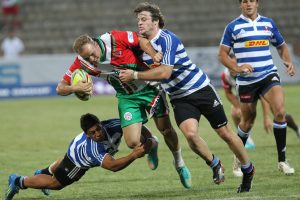
Rugby Injuries
Rugby players frequently sustain injuries such as shoulder dislocations, ligament tears, and concussions. Our treatment begins with a detailed assessment to diagnose the injury accurately. Acute injuries, like muscle strains or ligament sprains, are managed with techniques such as cryotherapy, manual therapy, and therapeutic taping to alleviate pain and reduce inflammation.
Rehabilitation focuses on restoring the player’s strength, stability, and functional movement. For shoulder injuries, particularly rotator cuff tears, a structured program of strengthening and proprioception exercises is crucial. Concussion management involves a graded return-to-play protocol, ensuring full cognitive recovery before resuming contact. Injury prevention education is also key, emphasizing proper tackling techniques, strength training, and adequate recovery periods. Our aim is to provide comprehensive care, ensuring rugby players return to the field safely and effectively while minimizing the risk of re-injury.


Running Injuries
Runners commonly suffer from issues such as shin splints, Achilles tendonitis, and patellofemoral pain syndrome. Our approach begins with a thorough assessment to identify the underlying cause of the injury, including gait analysis and muscle imbalance evaluation. For acute conditions like shin splints, we use techniques such as manual therapy, ultrasound, and cryotherapy to reduce inflammation and pain.
Rehabilitation focuses on addressing biomechanical faults and strengthening key muscle groups. For Achilles tendonitis, eccentric strengthening exercises and calf stretches are crucial components of the treatment plan. Patellofemoral pain is managed with a combination of quadriceps strengthening, hip stabilization exercises, and modifications to running technique. Preventative education is essential, highlighting the importance of proper footwear, gradual training progression, and cross-training to avoid overuse injuries. Our goal is to ensure runners can return to their sport with improved mechanics and reduced risk of future injuries.
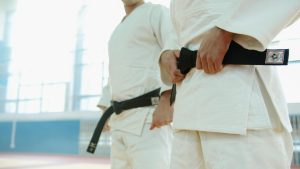
Martial Arts Injuries
Martial artists often face injuries such as joint dislocations, muscle strains, and fractures. Treatment begins with a detailed assessment to understand the injury’s nature and severity. Acute injuries, such as muscle strains or joint dislocations, are managed with techniques like manual therapy, cryotherapy, and therapeutic taping to alleviate pain and reduce inflammation.
Rehabilitation is tailored to restore strength, flexibility, and functional movement. For joint injuries, particularly in the shoulder or knee, a structured program of progressive resistance exercises, proprioceptive training, and sport-specific drills is essential. Fractures require careful management, including immobilization followed by gradual mobilization and strengthening. Injury prevention education is key, emphasizing proper technique, adequate warm-ups, and conditioning programs. Our goal is to ensure martial artists return to their practice safely and effectively, with reduced risk of future injuries, enhancing their performance and longevity in the sport.


Golf Injuries
Treating golf injuries involves addressing the unique demands of the sport, which often leads to issues such as lower back pain, golfer’s elbow, and shoulder strains. Our approach starts with a thorough assessment to pinpoint the injury’s cause, including evaluating swing mechanics and muscle imbalances. For acute injuries like golfer’s elbow, we employ techniques such as manual therapy, ultrasound, and cryotherapy to reduce pain and inflammation.
Rehabilitation focuses on restoring strength, flexibility, and optimal movement patterns. For lower back pain, core strengthening and flexibility exercises, along with postural correction, are essential. Shoulder strains are managed with a combination of rotator cuff strengthening, scapular stabilization exercises, and gradual return to full swing motion. Preventative education is crucial, emphasizing proper swing mechanics, adequate warm-up routines, and conditioning programs to maintain overall fitness. Our goal is to ensure golfers can return to the course with improved performance and minimized risk of re-injury.

Cycling Injuries
Treating cycling injuries is a significant part of our practice due to the sport’s repetitive motion and endurance demands. Cyclists often suffer from issues such as knee pain, lower back pain, and Achilles tendonitis. Treatment begins with a comprehensive assessment to understand the injury’s nature and cause, including a bike fit analysis and evaluation of riding posture. Acute injuries, like knee pain, are managed with techniques such as manual therapy, cryotherapy, and therapeutic taping to alleviate pain and reduce inflammation.
Rehabilitation focuses on addressing biomechanical issues and restoring strength and flexibility. For knee pain, specific strengthening exercises for the quadriceps and hamstrings, along with stretching routines, are essential. Lower back pain is treated with core strengthening, postural corrections, and flexibility exercises. Injury prevention education is also crucial, emphasizing proper bike setup, training progression, and cross-training to avoid overuse injuries. Our aim is to ensure cyclists can return to their sport with improved mechanics and reduced risk of future injuries, enhancing their performance and enjoyment of cycling.

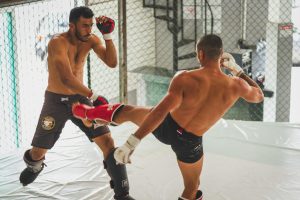
MMA Injuries
Treating mixed martial arts (MMA) injuries demands a comprehensive and specialized approach due to the sport’s high-impact and multifaceted nature. MMA fighters commonly experience injuries such as joint dislocations, muscle strains, and fractures. My treatment begins with a detailed assessment to accurately diagnose the injury’s severity and underlying causes. Acute injuries, such as muscle strains or joint dislocations, are managed using techniques like manual therapy, cryotherapy, and therapeutic taping to reduce pain and inflammation.
Rehabilitation is tailored to restore the fighter’s strength, flexibility, and functional movement. For joint injuries, particularly in the shoulders and knees, a structured program of progressive resistance exercises, proprioceptive training, and sport-specific drills is essential. Fractures require careful management, including immobilization followed by gradual mobilization and strengthening. Injury prevention education is crucial, emphasizing proper techniques, adequate warm-ups, and conditioning programs. Our goal is to ensure MMA fighters return to their sport safely and effectively, minimizing the risk of re-injury while enhancing their overall performance and resilience in the ring or cage.
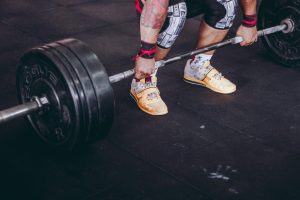
Powerlifting Injuries
Treating Powerlifting injuries involves addressing the specific demands of the sport, which often lead to issues such as lower back pain, knee strains, and shoulder impingements. Our approach starts with a comprehensive assessment to accurately diagnose the injury and understand its causes, including evaluating lifting techniques and muscle imbalances. Acute injuries, like knee strains, are managed using techniques such as manual therapy, cryotherapy, and therapeutic taping to alleviate pain and reduce inflammation.
Rehabilitation focuses on restoring strength, stability, and proper movement patterns. For lower back pain, core strengthening and flexibility exercises, along with postural corrections, are essential components of the treatment plan. Shoulder impingements are managed with a combination of rotator cuff strengthening, scapular stabilization exercises, and adjustments to lifting form. Injury prevention education is vital, emphasizing proper lifting mechanics, adequate warm-up routines, and balanced training programs. Our aim is to help Powerlifting athletes return to their sport with improved performance and minimized risk of re-injury, ensuring they can lift safely and effectively.

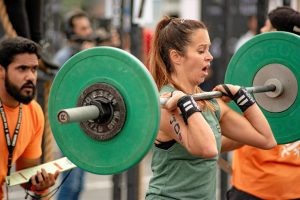
CrossFit Injuries
Treating CrossFit injuries involves a targeted approach due to the sport’s high-intensity and varied movements. CrossFit athletes frequently suffer from issues such as shoulder impingements, lower back pain, and knee strains. Our treatment begins with a thorough assessment to accurately diagnose the injury and understand its underlying causes, including an analysis of workout techniques and biomechanical imbalances. Acute injuries, like shoulder impingements, are managed with techniques such as manual therapy, cryotherapy, and therapeutic taping to reduce pain and inflammation.
Rehabilitation focuses on restoring strength, stability, and functional movement. For lower back pain, core strengthening exercises, flexibility routines, and postural corrections are essential components of the treatment plan. Knee strains are addressed with specific strengthening exercises for the quadriceps and hamstrings, along with mobility work. Injury prevention education is crucial, emphasizing proper form, adequate warm-up routines, and balanced training programs. Our goal is to ensure CrossFit athletes return to their training safely and effectively, minimizing the risk of re-injury while enhancing their overall performance and resilience in high-intensity workouts.
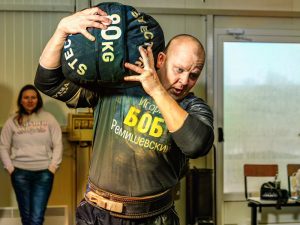
Strongman Injuries
Treating Strongman injuries requires a specialized approach due to the extreme loads and varied events involved in the sport. Strongman athletes often experience injuries such as lower back pain, shoulder strains, and bicep tears. Our treatment begins with a thorough assessment to diagnose the injury accurately and understand its underlying causes, including an analysis of lifting techniques and biomechanical imbalances. Acute injuries, like bicep tears, are managed with techniques such as manual therapy, cryotherapy, and therapeutic taping to reduce pain and inflammation.
Rehabilitation focuses on restoring strength, stability, and functional movement. For lower back pain, core strengthening exercises, flexibility routines, and postural corrections are essential components of the treatment plan. Shoulder strains are treated with a combination of rotator cuff strengthening, scapular stabilization exercises, and modifications to lifting techniques. Injury prevention education is crucial, emphasizing proper lifting mechanics, adequate warm-up routines, and balanced training programs. Our goal is to ensure Strongman athletes return to their sport safely and effectively, minimizing the risk of re-injury and optimizing their performance.
